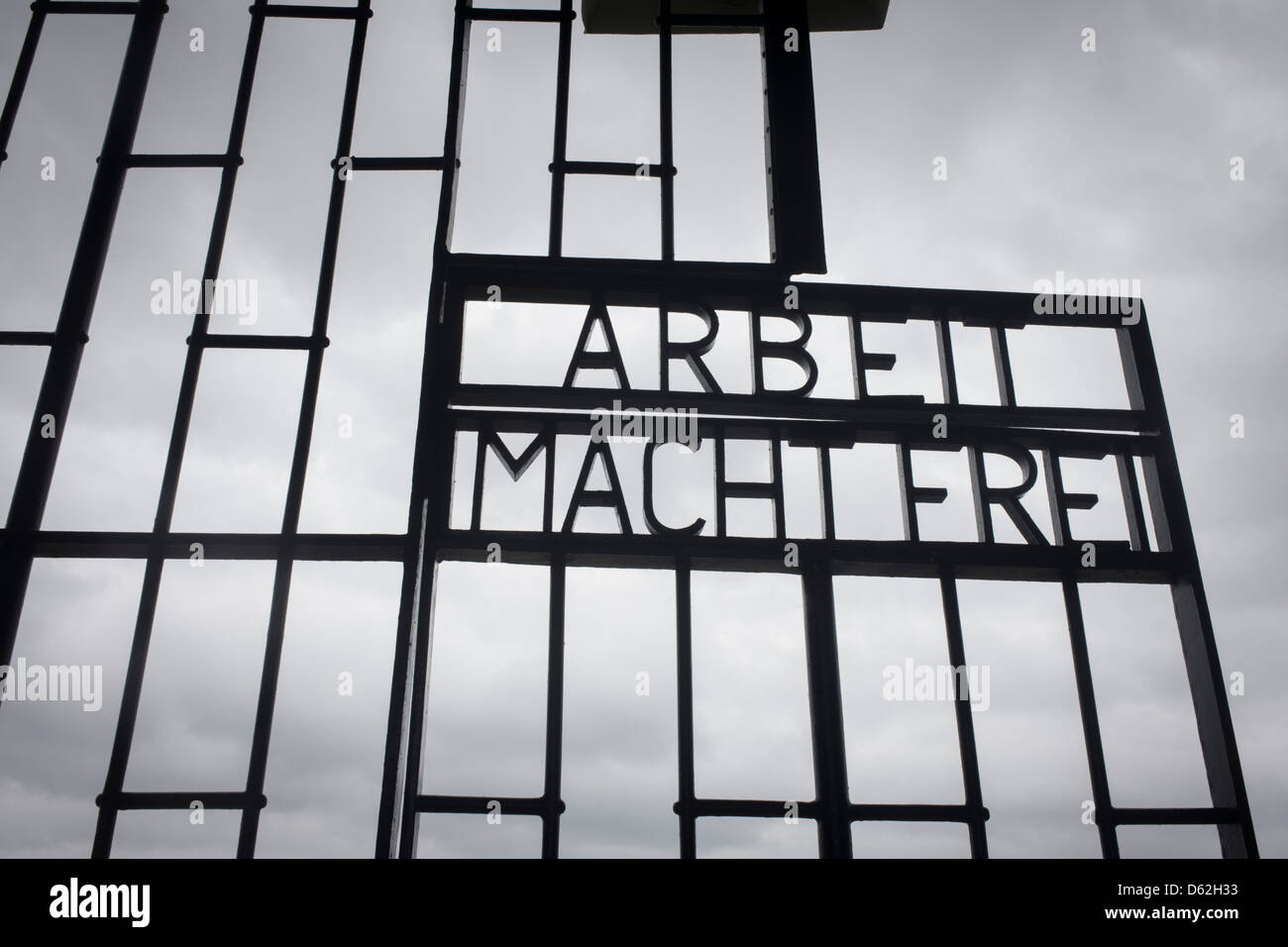The notorious moto of German labour and extermination camps Arbeit Macht Frei ('Work will set you free') in the Nazi and Soviet Sachsenhausen concentration camp during WW2, now known as the Sachsenhausen Memorial and Museum. Sachsenhausen was a Nazi concentration camp in Oranienburg, 35 kilometres (22 miles) north of Berlin, Germany, used primarily for political prisoners from 1936 to the end of the Third Reich in May 1945. (More caption in Description).

Image details
Contributor:
RichardBakerGermany / Alamy Stock PhotoImage ID:
D62H33File size:
36.4 MB (730.5 KB Compressed download)Releases:
Model - no | Property - noDo I need a release?Dimensions:
4368 x 2912 px | 37 x 24.7 cm | 14.6 x 9.7 inches | 300dpiDate taken:
6 April 2013Location:
Sachsenhausen concentration camp memorial, Oranienburg, GermanyMore information:
This image could have imperfections as it’s either historical or reportage.
The notorious moto in German labour and extermination camps Arbeit Macht Frei ('Work will set you free') in the Nazi and Soviet Sachsenhausen concentration camp during WW2, now known as the Sachsenhausen Memorial and Museum. Sachsenhausen was a Nazi concentration camp in Oranienburg, 35 kilometres (22 miles) north of Berlin, Germany, used primarily for political prisoners from 1936 to the end of the Third Reich in May 1945. After World War II, when Oranienburg was in the Soviet Occupation Zone, the structure was used as an NKVD special camp until 1950. Executions took place at Sachsenhausen, especially of Soviet prisoners of war. 30, 000 inmates died there from exhaustion, disease, malnutrition, pneumonia, etc. The remaining buildings and grounds are now open to the public as a museum.